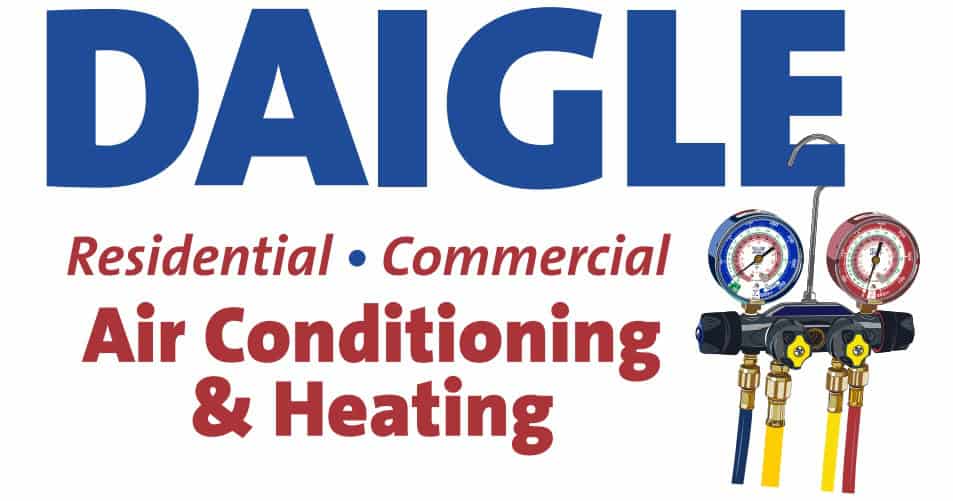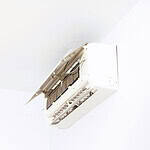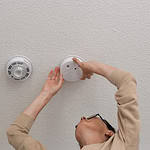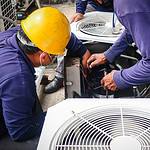When it comes to keeping a home comfortable, air conditioning systems play a crucial role. Whether it’s a ductless or traditional AC system, repairs can become necessary, and each type requires different approaches. Knowing the differences between ductless AC repairs and traditional AC repairs can help homeowners make better decisions. AC repair is not a one-size-fits-all task. This guide will break down what separates the two systems and the distinct repair challenges each presents.
Ductless AC Repairs vs Traditional AC Repairs
Both ductless and traditional AC systems serve the same purpose—cooling a space—but they do so in different ways, leading to varying repair needs. Ductless systems, often called mini-split systems, do not rely on ducts to distribute cool air. They consist of an outdoor compressor and indoor units mounted on walls, which makes them efficient for smaller or zoned spaces. Traditional AC units, on the other hand, rely on ducts to circulate cool air throughout the home.
When these systems break down, the repairs can vary significantly. For example, ductless AC systems may experience issues with refrigerant leaks or clogged condensate lines. Traditional systems often suffer from faulty ductwork or compressor failures. A seasoned HVAC technician with experience in both systems will approach each repair with different tools and strategies, depending on the system type.
- Ductless AC systems are more flexible for smaller spaces.
- Traditional systems are ideal for large homes with existing ductwork.
- Repairs for ductless systems can sometimes be less intrusive compared to traditional systems.
Common Issues in Ductless AC Systems
Ductless AC systems are becoming increasingly popular due to their energy efficiency and zoned cooling. However, like all technology, they aren’t immune to issues. Refrigerant leaks are one of the most common problems. These leaks can cause the system to stop cooling properly, and if left unchecked, can damage the compressor, leading to costly repairs.
Another common issue is the condensate drain line becoming clogged. When this happens, water can’t drain from the unit, which can lead to water damage or system shutdown. The placement of indoor units can also lead to problems; if they’re installed incorrectly, they may not cool the space efficiently.
- Refrigerant leaks can cause inefficient cooling and potential compressor damage.
- Clogged condensate lines can lead to water damage and system failure.
- Incorrectly installed indoor units may fail to cool the area adequately.
Frequent Repairs in Traditional AC Units
Traditional AC systems tend to have a different set of issues. Since they rely on ductwork, leaks or poor insulation in the ducts can significantly affect the system’s efficiency. Poorly maintained ductwork often results in cool air being lost before it reaches its destination, forcing the AC unit to work harder, which can lead to breakdowns.
The compressor in traditional systems is another common point of failure. Compressors are responsible for circulating the refrigerant necessary for cooling, and if they break down, the whole system can fail. Fan issues, such as motor malfunctions or worn-out blades, are also frequent and can hinder the system’s ability to distribute air.
- Leaky ductwork can decrease system efficiency.
- Compressor failures can cause complete system shutdowns.
- Fan issues, such as worn blades, can affect air circulation.
Repair Costs of Ductless Versus Traditional AC Systems
Cost is always a concern when it comes to AC repair, and ductless systems tend to have different pricing models than traditional units. While both systems require skilled labor for repairs, ductless systems may sometimes be less expensive to fix. For example, replacing a damaged indoor unit in a ductless system is often simpler and more cost-effective than repairing extensive ductwork in a traditional system.
However, if a major component like the outdoor compressor in a ductless system fails, repairs can become pricey. Similarly, traditional systems with severe duct issues can also rack up high repair costs, particularly if the ductwork is hidden behind walls or ceilings.
- Ductless systems may offer lower repair costs for certain issues.
- Traditional systems can have higher costs if ductwork repairs are needed.
- Both systems have expensive components like compressors that can drive up repair costs.
Which is Easier to Repair: Ductless or Traditional AC?
When it comes to ease of repair, ductless systems are often viewed as simpler, especially for smaller homes or offices. These systems don’t have the complex network of ducts that traditional systems do, making access to problematic parts easier. An HVAC technician may need to open walls or ceilings to access ductwork in a traditional system, which can increase the time and labor costs.
However, traditional AC systems benefit from being the industry standard, meaning that most HVAC technicians are familiar with their components and typical problems. This familiarity can sometimes make troubleshooting faster, even if the actual repairs are more involved.
- Ductless systems are often easier to access for repairs.
- Traditional systems require more time and effort for duct-related issues.
- Most HVAC technicians are highly familiar with traditional AC systems.
Choosing the Right AC Repair Service for Your System
Selecting the right repair service is critical to extending the lifespan of your AC unit, whether ductless or traditional. Homeowners should look for an HVAC company that has experience with both system types to ensure the technician knows how to handle the specific issues. Asking about certification and training can also give peace of mind.
A reputable company will assess the system’s needs, provide a clear breakdown of the necessary repairs, and offer a fair price estimate. Additionally, regular maintenance can prevent many common issues from arising in the first place, reducing the need for costly repairs.
- Choose a repair service with experience in both ductless and traditional systems.
- Ensure the company provides clear estimates and explanations.
- Regular maintenance can prevent many common issues.
Key Takeaways on Differences Between Ductless and Traditional AC Repairs
Understanding the differences between ductless AC repairs and traditional AC repairs can help homeowners make informed decisions about their cooling systems. Both systems come with unique challenges, but ductless systems tend to be easier to repair due to their compact and accessible design. However, traditional systems offer familiarity and a well-established repair process.
- Ductless systems don’t require ductwork, making some repairs less invasive.
- Traditional AC units can have issues related to ducts and compressors.
- The cost and ease of repair can vary depending on the issue and the system type.
Frequently Asked Questions
What are the most common problems with ductless AC systems?
Ductless AC systems often experience refrigerant leaks, clogged condensate lines, and improper installation of indoor units.
Is it more expensive to repair ductless AC systems than traditional ones?
Ductless systems can be less expensive to repair in certain cases, but major component failures, such as a compressor issue, can be costly.
Are ductless systems more energy-efficient than traditional systems?
Yes, ductless systems often offer better energy efficiency because they avoid the energy losses associated with ductwork.
Can any HVAC technician repair both ductless and traditional systems?
While most HVAC technicians can repair both, it’s essential to choose a technician with experience specific to your system type.
How often should I service my AC unit?
It’s recommended to service both ductless and traditional AC units once a year to ensure optimal performance and prevent breakdowns.
- About the Author
- Latest Posts
Founded in 2006, Daigle A/C & Heating has grown from a small startup to a multi-state operation through dedication to detail and quality workmanship. Specializing in air conditioning and heating solutions, the company not only serves residential and commercial clients but also holds contracts with various U.S. Government outlets.












